Checking out iPhone 7's physical changes
Posted by Wesley on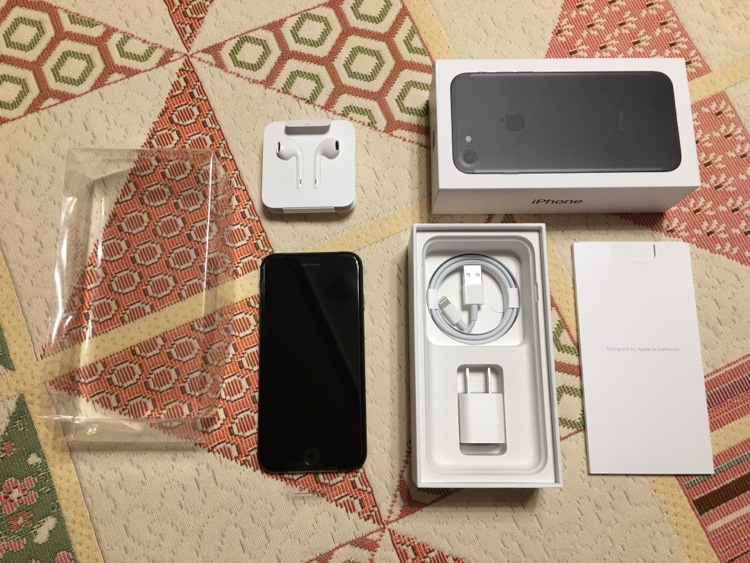
Contents of the iPhone 7 package
As far as changes go, iPhone 7 is doing a big jump we've come to expect when the major number changes (e.g. iPhone 5S to iPhone 6). It just happens to be that Apple was happy to keep the general shape and size for the third generation. Personally, this seems like Apple is happy with these design decisions instead of being lazy. After all, Original iPhone style survived three generations as well until thinner design became feasible.
In any case, the packaging of the iPhone 7 is also largely the same as the previous 4.7" iPhones. Two major differences, other than the phone itself, are the photo of the iPhone on the box and the bundled EarPod earphones using the Lightning connector instead of the 3.5mm earphone jack. 3.5mm to Lightning adapter is included for those who need to use the existing earphones.
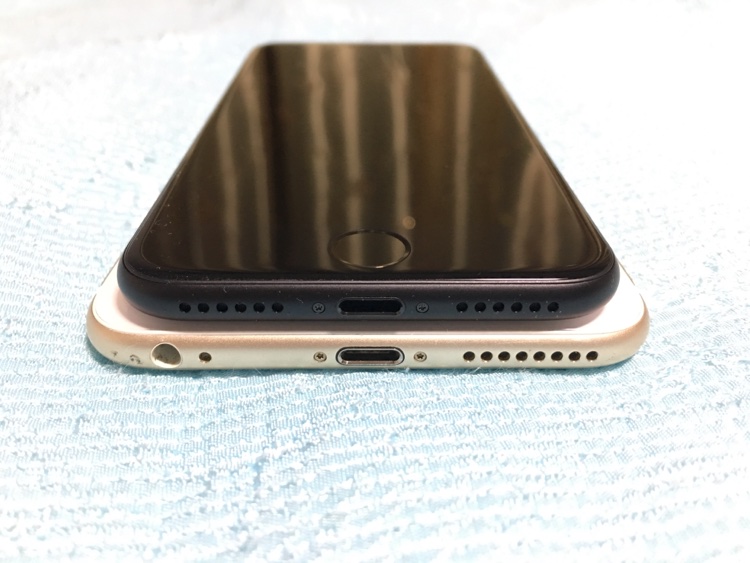
Bottom area: iPhone 7 (top) and iPhone 6 Plus (bottom)
Speaking of the earphone jack, iPhone 7 indeed no longer has one as you can see here. This has been the source of much online drama, but I expect it to simmer down as time goes on, much like when Lightning connector itself was introduced with iPhone 5.
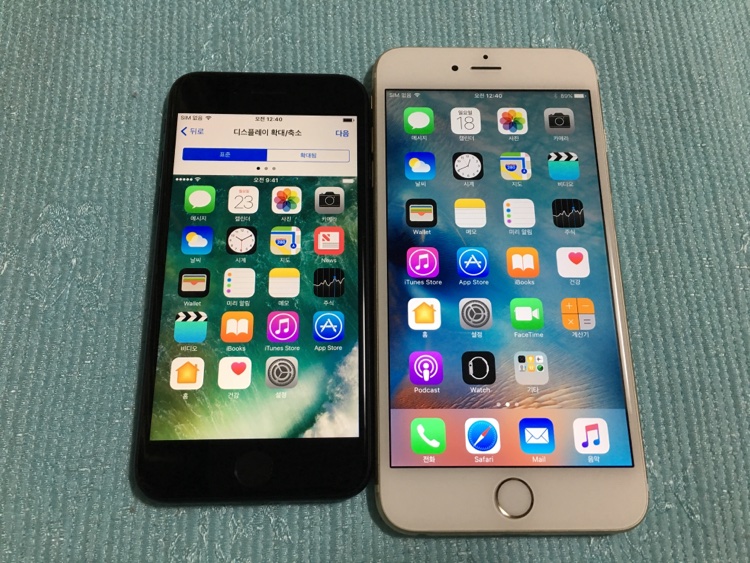
Screen: iPhone 7 (left) and iPhone 6 Plus (right)
For the screen, the resolution and size has again remained the same since the 6 series. iPhone 7 has a 4.7" 1334x750 screen and the 7 Plus has a 5.5" 1920x1080 (internally 2208x1242) screen. However, there's more than meets the eye. The screen is much brighter (625 cd/m2 instead of 500 cd/m2 on 4 to 6S series) and supports a much wider colour space (DCI-P3 instead of full sRGB on 5 to 6S series). It's clear Apple thinks more accurate and brighter screens are better than raw pixel count.
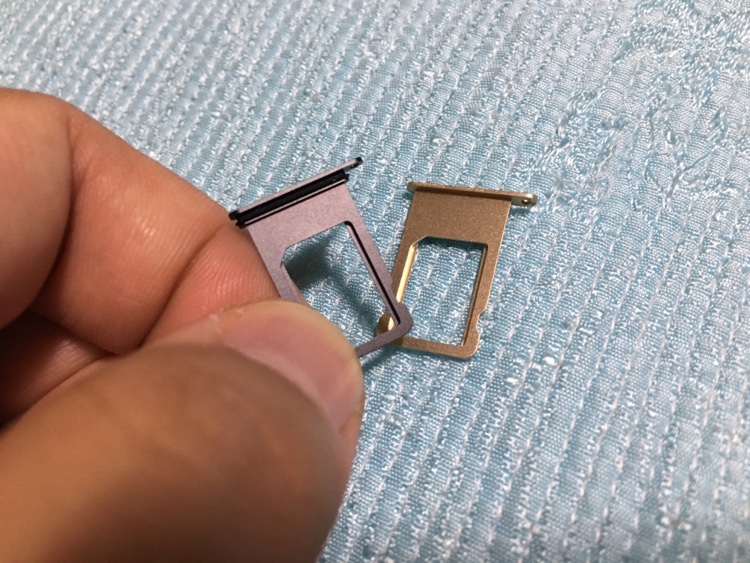
SIM tray: iPhone 7 (left) and iPhone 6 Plus (right)
Another thing that isn't obvious at first sight is the water resistance. This has been a long time in the making for Apple products. The first generation Apple Watch that came out in April 2015 was the first to have this feature, and the iPhone 6S series introduced half a year later had rubber gasket between the screen and the body despite not being certified for water resistance. Now with iPhone 7, further steps have been taken to ensure IP67 certification, like this SIM tray having rubber gasket at the edge where there used to be none.
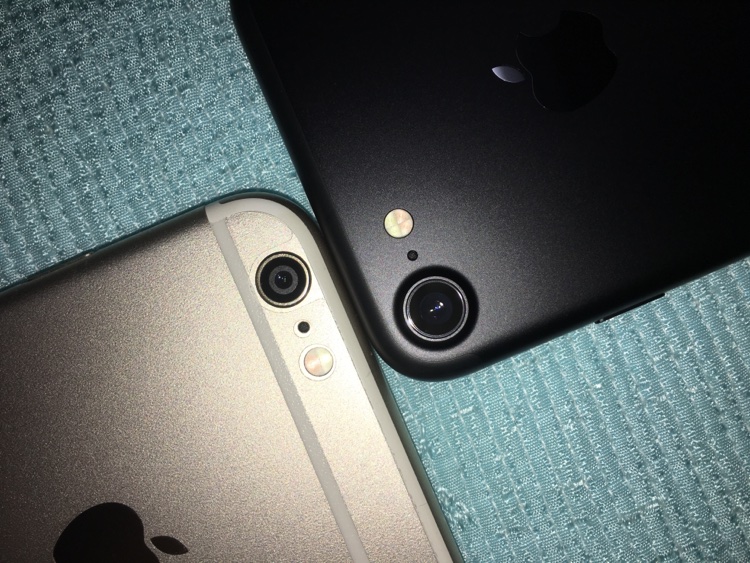
Rear cameras: iPhone 6 Plus (left) and iPhone 7 (right)
Lastly, there's the camera. Last year, the major improvements were moving to higher pixel count (12MP for rear and 5MP for front, up from 8MP and 1.2MP, respectively) and introducing 4K video recording. This year, the rear camera is enjoying a brighter lens (f/1.8, up from f/2.2) and the much needed optical image stabilization on the 4.7" model. The 5.5" model adds a telephoto camera module to enable 2x optical zoom and shallow depth of field for portrait shots. You can see here that the faster f-stop necessitated a larger lens.
Another thing you can notice in the picture is that there are now four True Tone flash LEDs instead of two as was the case since iPhone 5S. This should provide even more naturally-coloured photos when the flash is used. And while not related to the camera, you can see that the antenna band has been moved up to be around the edge of the phone. For the black and jet black models, the colour of the band even matches that of the body very closely and renders it nearly invisible. No wonder these colours are so popular.
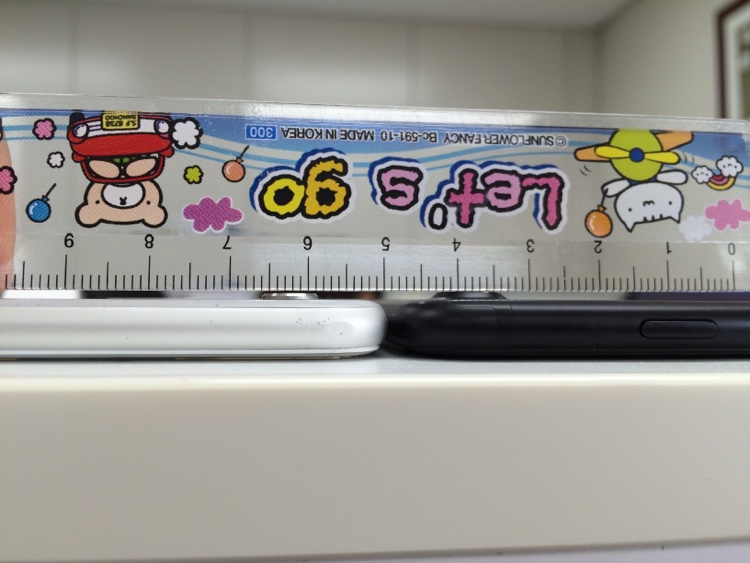
Camera bump: iPhone 6 (left) and iPhone 7 (right)
The larger camera module does have a very minor downside, though. As you can see here, the camera bump is slightly bigger. Those who don't like the bump will need a slightly thicker case to compensate.
In my opinion, iPhone 7 brings a lot to the table despite looking similar to iPhone 6S at a casual glance. The black colour is especially well done and makes it look very attractive. It's the first time in many years that I actively sought a darker version of an iPhone and I have no regrets about the decision. Now that the visual inspection is done, it's time to do some tests.